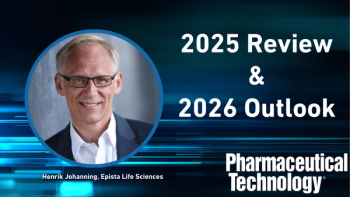
CPHI Milan 2024: What Does the Future Pharma Workforce Look Like?
Five speakers discussed the impact of the COVID-19 pandemic, the rise of artificial intelligence, more women in leadership tracks in the industry, and various emerging technologies.
On the final day of CPHI Milan 2024, Oct. 10, 2024, a panel brought together by Fujifilm Diosynth Biotechnologies debated the numerous paths to “Building the Future Pharma Workforce” (1,2). Moderated by Pushpa Vijayaraghavan, healthcare practice lead at Sathguru Management Consultants, the other contributing panelists were Nagarjun Chakilam, director of Maithri Drugs; Jakub Knurek, business development specialist at Mabion; Morgan Rex, senior quality engineer at ApiJect; and Megan Smyth, senior team leader at Almac Group.
“There's two significant changes that I've really seen in my nine years of being in the industry so far,” Rex said. “The first is that there's a general trend, and this is really relevant in the United States, to bring healthcare out of the hospital in[to] the clinic and bring it directly to the patient as much as possible. And that trend is being driven by this desire to decrease the cost of healthcare while also increasing the access to healthcare, which will increase the adherence of patients to their medicine, which will improve vaccine accessibility—and so that's what we're seeing in the developed world, and … we're creating different formats for drug delivery and injections.”
Accelerating these changes in the industry have been some necessary adjustments in workflow and, in tandem, newly forged technologies resulting from the COVID-19 pandemic.
“So, the way it impacted us is, you know, [to] think about digitizing all the quality processes,” Chakilam said. In the past, quality processes were manual and siloed, according to Chakilam. “But now for us to embrace these new technologies, what we thought was it is more crucial and more important to digitize them first, and not just digitization like transforming from paper to screen or just doing something on the computer, but we want to have all those systems integrated in the back end as well.” Chakilam suggested technology trends be embraced and for the industry to move to implement flow chemistry once digitalization is completed. “Maybe at that point it will be a little bit more easier and more effective.”
“We're really excited about how we can unleash the power of AI [artificial intelligence] in our roles, in our organizations and our industry,” moderator Vijayaraghavan added. “How do we get our human capital, the security that there is still a people-driven future here? And how should people think of staying ahead of this curve and not feeling threatened by it, but, you know, being part of [the] revolution?”
Discussing the rise of women in leadership positions in the pharmaceutical industry, Vijayaraghavan made light of the expert panel consisting of more women than men, a point that was then elaborated on by Knurek.
“In every gender, [to] have that passion for biotech, for improvement that's really challengeable for all companies, how we can search, I think, more about headhunting, talent acquisition from that perspective?” he said.
In any case, Smyth said, the industry is expanding, and job recruitment is hearty. “There's just so many opportunities to be able to do so much in this industry. And you know, we've been building our capabilities towards manufacturing, and yeah, I think I'm really excited,” she said. “It's not going to be without its challenges, because we're doing a lot of these things for the first time, and it's exciting to be an innovator, but it's also going to have the challenges that need to be problem solved. And I think ultimately that's why most of us are in this industry, to be able to improve it and make it better.”
References
1. Vijayaraghavan, P.; Smyth, M.; Chakilam, N.; Rex, M.; and Knurek, J. Building the Future Pharma Workforce. Presentation at CPHI Milan 2024, Milan, Italy, Oct. 10, 2024.
2. CPHI Milan, Conference Agenda. cphi.com/europe/en/whats-on/agenda (accessed Oct. 10, 2024).
Newsletter
Get the essential updates shaping the future of pharma manufacturing and compliance—subscribe today to Pharmaceutical Technology and never miss a breakthrough.




